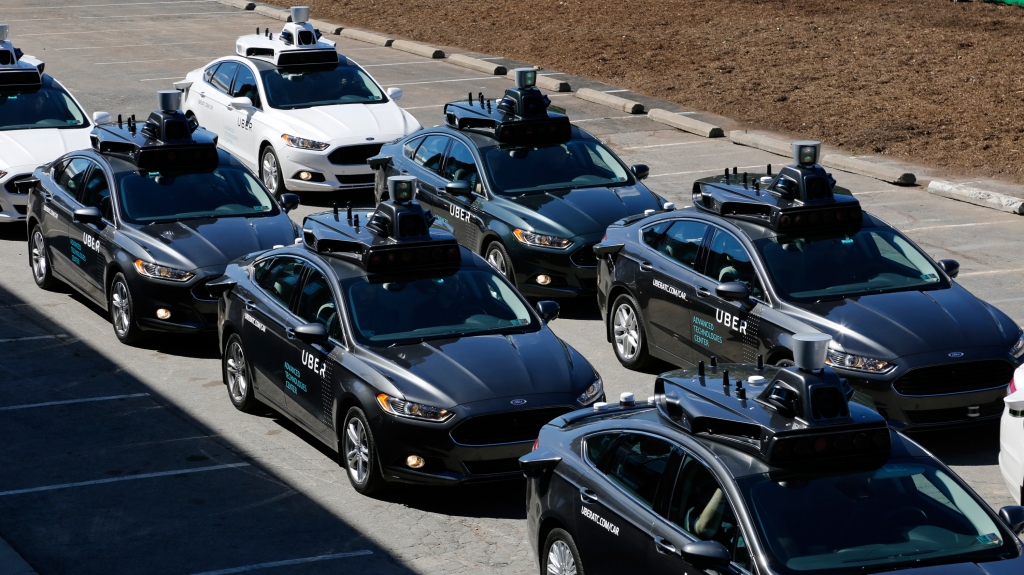-
Tips for becoming a good boxer - November 6, 2020
-
7 expert tips for making your hens night a memorable one - November 6, 2020
-
5 reasons to host your Christmas party on a cruise boat - November 6, 2020
-
What to do when you’re charged with a crime - November 6, 2020
-
Should you get one or multiple dogs? Here’s all you need to know - November 3, 2020
-
A Guide: How to Build Your Very Own Magic Mirror - February 14, 2019
-
Our Top Inspirational Baseball Stars - November 24, 2018
-
Five Tech Tools That Will Help You Turn Your Blog into a Business - November 24, 2018
-
How to Indulge on Vacation without Expanding Your Waist - November 9, 2018
-
5 Strategies for Businesses to Appeal to Today’s Increasingly Mobile-Crazed Customers - November 9, 2018
Feds preview rules of the road for self-driving cars
Details will come Tuesday.
Advertisement
“You have to remember that the United States’ approach to automobile-safety regulation is a self-certification approach, so automobiles today are supposed to meet our federal motor-vehicle-safety standards [and] the manufacturers self-certify that they do”, Foxx said in an interview after the conference call. New regulation from the U.S. Department of Transportation would include a 15-point safety assessment for self-driving-car manufacturers (which would ask manufacturers a slew of logistics questions, including how occupants of self-driving cars would be protected in case of an accident, and how passenger privacy will be protected) as well as clarification of how existing transit laws can be applied to self-driving vehicles.
The model state policy breaks down federal and state responsibilities for regulating automated vehicles.
The NHTSA is quick to point out that the preliminary guidelines it published today aren’t legally binding – companies working on self-driving vehicles will follow these suggestions of their own volition.
“We have to have a level of confidence that those issues, each one of the 15, have been independently reviewed, evaluated and confirmed”.
The plan highlights current regulatory powers that the DOT can use to promote the safe operation and deployment of driverless vehicles, such as rulemaking, exemptions, letters of interpretation and the National Highway Traffic Safety Administration’s (NHTSA) enforcement authority. But the rulemaking process is often laborious and can take years to complete. And yet, back in January, Secretary of Transportation Anthony Foxx announced that the federal government had no plans for national regulations. The agency’s administrator, Mark Rosekind, has said he wants the guidelines to be flexible to keep pace with industry innovation.
“The way that it was presented and talked about (was) with a lot of enthusiasm for the potential for these systems”.
The coalition supports guidelines that standardize self-driving regulations across the country, avoiding confusion and lost industry momentum that would be cause by rules that vary from state to state.
The highly-anticipated policy for autonomous vehicles focuses on what the department calls “highly automated vehicles”, in which a driver is able to regain control-like Tesla’s Autopilot.
Sustainability. Improving the efficiency of vehicles and reducing road congestion, which will decrease carbon emissions. The shared objective is to ensure the establishment of a consistent national framework rather than a patchwork of incompatible laws.
The rapidly changing technology is also forcing a culture change in how regulators approach oversight.
Barack Obama believes autonomous cars are key to driving America “towards a better future for everyone” as his administration lays the foundations for US-wide guidance governing self-driving cars. We all have nightmare stories of being guided the wrong way by navigation systems and such glitches will need to be fixed and the overall artificial intelligence at the core of self-driving systems will likely need to be upgraded before the real revolution can begin. “There’s going to be a need for conversation over the long term”. “The policy will be updated annually to ensure it remains relevant and timely and will continue to be shaped by public comment on the entire policy at www.transportation.gov/AV”.
“Guidance is the right action to take since the technology is developing quickly and collaboration between auto makers and [regulators] is critical to avoid policies that become outdated”, said a spokeswoman for the Alliance of Automobile Manufacturers, a Washington advocacy group representing a dozen vehicle makers.
Automakers and technology companies are racing to develop vehicles that can drive themselves at least part of the time.
Federal regulators, faced with a growing number of self-driving auto tests on roads across the USA, plan to issue a flurry of new guidelines Tuesday aimed at automakers and tech companies.
Advertisement
The agency said it expects to flesh out more fully these guidelines in the future, and aims to do additional research in areas such as “benefits assessment, human factors, cybersecurity, performance metrics, objective testing, and others as they are identified in the future”.




























